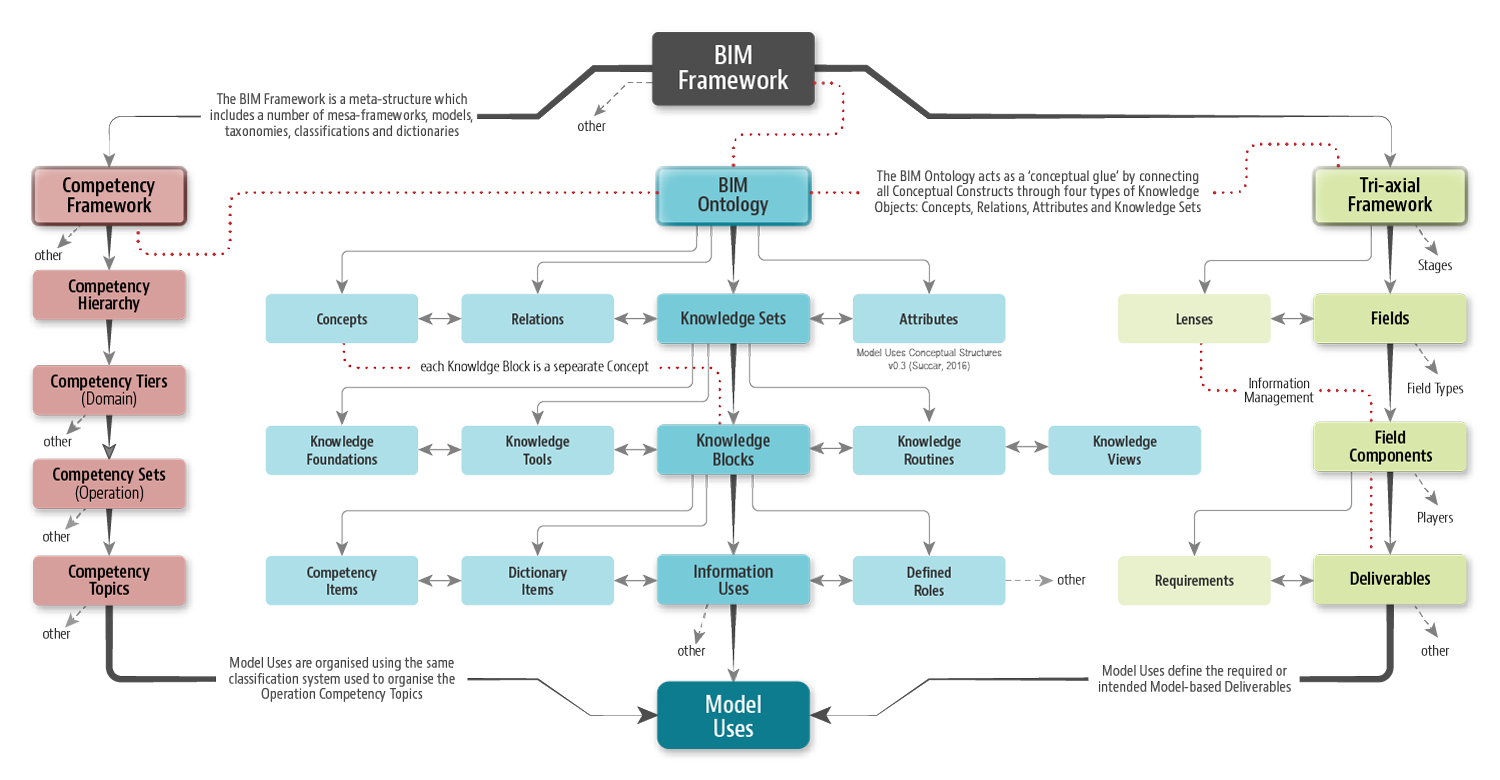
This numbered Frameworks Page covers a single Visual Knowledge Model (VKM). Refer to Tags at the bottom for content classification and source publication if any. The page may be updated to connect with newer Frameworks Pages. The number is for pages, not for content.
Published on September 9, 2015 | Last Updated on September 20, 2025
Model Uses are the “expected or intended project deliverables expected from generating, collaborating-on and linking 3D models to external databases” (BIM Dictionary, 2015). Each Model Use represents a set of defined requirements, specialised activities and specific project outcomes, grouped together under a single heading.
Model Uses [1] rely on the conceptual structures of the BIM Framework, namely: the Tri-Axial Framework, Competency Framework, and BIM Ontology – Figure 1:
 Figure 1. Conceptual Structure underlying Model Uses v0.3 (Older Version )
Figure 1. Conceptual Structure underlying Model Uses v0.3 (Older Version )
As highlighted in Figure 1, Model Uses are supported by three conceptual structures [2] – Updated May 2, 2016:
- Within the Tri-Axial Framework, Model Uses are deliverables [Tri-axial Framework>Fields>Field Components>Deliverables (Model-based Deliverables, identified through the Information Management Lens)] (refer to Papers A2 and A5);
- According to the BIM Ontology, a Model Use is a knowledge block [BIM Ontology>Knowledge Objects>Knowledge Sets>Knowledge Blocks> Information Uses > Model Uses] (refer to Thesis, Appendix A); and
- Within the Competency Framework, Model Uses are competency topics [Competency Framework> Competency Hierarchy>Competency Tiers (Domain)>Competency Set (Operation)>Competency Topics (9 Topics)] (Refer to Paper A6).
Cite as: BIMe Initiative (2025), '37. Model Uses – Conceptual Structures', https://bimexcellence.org/frameworks/model-uses/. First published 9 September 2015. Viewed 25 November 2025
nice info about Conceptual Structures !!